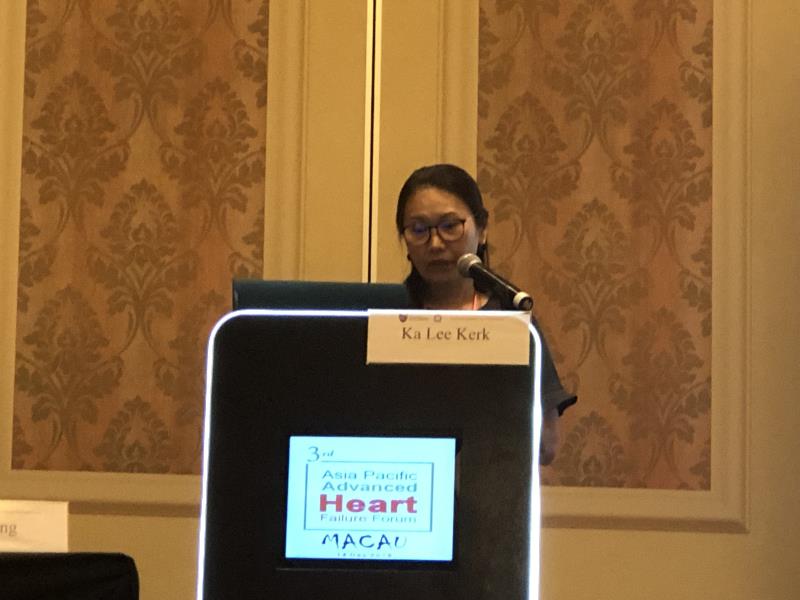 Ms Ka-Lee Kerk
Ms Ka-Lee KerkLeft ventricular assist devices (LVADs) improve survival and quality of life (QoL) in patients with advanced heart failure (HF). At the National Heart Centre Singapore (NHCS), a mechanical cardiac support (MCS) programme in place since 2001 has shown a 2-year survival rate of 100 percent with the use of continuous flow pumps.
“LVADs are increasingly used in patients with advanced HF as a bridge to [heart] transplantation [BTT] or bridge to recovery [BTR]. In clinical trials, QoL improvements were seen as early as 1–3 months after LVAD implantation and were sustained throughout the duration of LVAD support,” said Ms Ka-Lee Kerk, cardiothoracic operating theatre nurse and VAD coordinator at NHCS. [Circulation 2012;126:866-874] “In the 2-year ROADMAP study, better survival with improved functional status was observed in patients on LVAD compared with those on optimal medical management. LVAD also provided improvement in health status among patients with low self-reported health-related QoL.” [JACC Heart Fail 2017;5:518-527; Circ Heart Fail 2017, doi: 10.1161/CIRCHEARTFAILURE.116.003910]
“At NHCS, an MCS programme has been in place to provide BTT or BTR since 2001. We also have an ongoing pilot project of MCS as destination therapy [DT] since 2012, funded by the Ministry of Health,” said Kerk.
Between May 2009 and September 2019, 104 patients (mean age, 51 years) had received continuous flow pumps at NHCS as BTT (n=65) or DT (n=29). “The 2-year survival rate was 100 percent. The median and longest duration of support was 2.9 years and 10.4 years, respectively, after a total follow-up period of 302 patient-years,” reported Kerk. “Thirty-two patients were successfully bridged to heart transplantation, while two were bridged to recovery.”
Among the 104 patients, the most common diagnosis was dilated cardiomyopathy (DCMP; n=46), followed by ischaemic CMP (n=35) and acute coronary syndrome (n=14). After the implantation procedure, all patients were discharged home with the device, with the exception of eight cases of perioperative mortality. The median duration of hospital stay and ICU stay was 29 days and 7 days, respectively.
“A successful LVAD programme requires funding, a dedicated multidisciplinary team with expertise in areas of support services, the use of complementary devices, availability of a referral base and adequate outpatient support, as well as longitudinal care and follow-up,” concluded Kerk. “Education and support are key for successful outpatient support.”